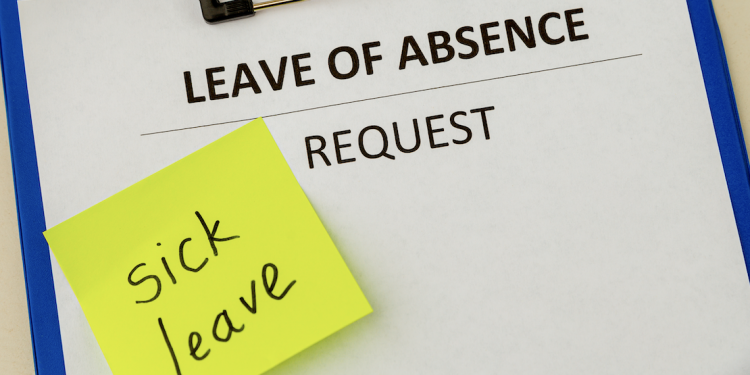Sickness absence rate reaches highest level since 2004, with 185.6 million working days lost in 2022.
The Official National Statistics report that the sickness absence rate increased to 2.6 per cent in 2022, up 0.4 per cent from the previous year and reaching its highest level since 2004 when it was 2.7 per cent.
The number of working days missed in 2022 due to illness or injury was a record-high 185.6 million, although the average number of days lost per employee stayed at 5.7. Minor diseases, which were responsible for 29.3 per cent of absences, were the main cause.
In 2022, sickness absence rates increased for all age categories, although they were highest for several groups, particularly women, older workers, those with long-term health issues, part-time employees, and those in care, leisure, or other service-related industries.
Hargreaves Lansdown head of personal finance Sarah Coles says: “The pandemic may have abated, but the sickness absence epidemic is still hanging over us. The number of days lost to sickness or injury hit a new high of 185.6 million in 2022. Let’s not forget, this is despite the fact we’ve also seen record numbers of people leave the workforce because of long term sickness, who won’t feature in absence figures any more.
“There has been a flood of people hitting the point when they’re too sick to work, and those who have a long-term condition and are still ploughing on were forced to take a record number of days off in 2022. This is likely to owe an awful lot to gaps in care during covid, changes in lifestyle during lockdowns, and then enormous ongoing problems accessing care.
“Separate work from the ONS found that one in five people (21 per cent) are waiting for a hospital appointment, test or to start receiving treatment through the NHS. Some 14 per cent had reported this in consecutive surveys – and were still waiting.
“Most causes of absence, however, were minor – making up more than a quarter of cases. This may owe something to the fact that social distancing has come to an end, and viruses have started circulating again. Musculoskeletal problems are the third most common reason, reflecting the fact that enforced lack of activity during lockdowns may have exacerbated existing issues.
“Respiratory illnesses have overtaken mental health problems, and now make up twice as large a proportion of illnesses as before the pandemic. This, of course, includes cases of Covid. It’s also worth noting that while the absence rate increased across the board, for those aged 65 and over, it hit a record high of 3.7 per cent of working hours.
“This is linked to the fact that people over the age of 65 make up a larger proportion of the workforce than in past years – in February this year it hit 11.6 per cent – the third highest this figure has been since records began. The raising of the state pension age means that those working beyond 65 are no longer largely healthy people who are keen to keep working. It now includes those who are struggling on, in jobs that may not be improving their health conditions, because they have no other choice.
The rise of sickness absence means we all need to consider what would happen if we were too sick to work. This includes looking at what you might get from your employer, in terms of sick leave for shorter illnesses and income protection if you’re off for longer periods.
“If it’s nothing to write home about, you may need to consider personal cover – like personal income protection or critical illness insurance. You also need to think about your pension, whether you could make it stretch if you were forced to stop work earlier than planned, and whether you can afford to boost contributions to put you in a better position further down the line.”
Socially Recruited founder of social media recruitment specialist Ben Keighley says: “It’s official: Britain is the sick man of Europe again. These figures show clearly the uphill battle Jeremy Hunt is facing as he tries to tackle the UK’s productivity crisis.
“The highest absence rate in two decades and a record number of days lost to illness or injury are hugely problematic for the Chancellor.
“While Covid continues to contribute directly to sickness rates in the workplace, its greatest impact is being seen in the care industries coping with its legacy. Absenteeism is soaring, particularly among staff who were on the frontline during the pandemic.
“For many Brits, time in the workplace has a significant bearing on their mental well-being so it’s important that provision exists to support existing staff and attract the new workers desperately needed to drive the economy forward.
“Companies should also ensure they are offering flexible and remote working models when recruiting to give a better work-life balance.”
Broadstone head of health & protection Brett Hill says: “After years of improving health in the workplace, sick days surged to a record high last year in concerning data which should raise huge red flags for employers up and down the country.
“The rapidly declining health of the nation’s workers will have a devastating impact on productivity. Bosses should brace for an acceleration of this trend in 2023 given the current crisis in the NHS with patients struggling to access appointments and treatment in good time.
“It is particularly worrying to see the record absences from those with longer-term health conditions as the evidence shows those who are off sick for extended periods often struggle to return to the workplace, resulting in permanent loss to the UK workforce.
“Businesses are increasingly recognising how important protecting the health of their employees is now they can no longer rely on the NHS. Putting in place services like digital GP appointments or private healthcare options for their staff will be vital in avoiding absenteeism, maintaining productivity levels and thriving.”





